A Complete Guide to Nicotine: What Does Nicotine Do to Your Body
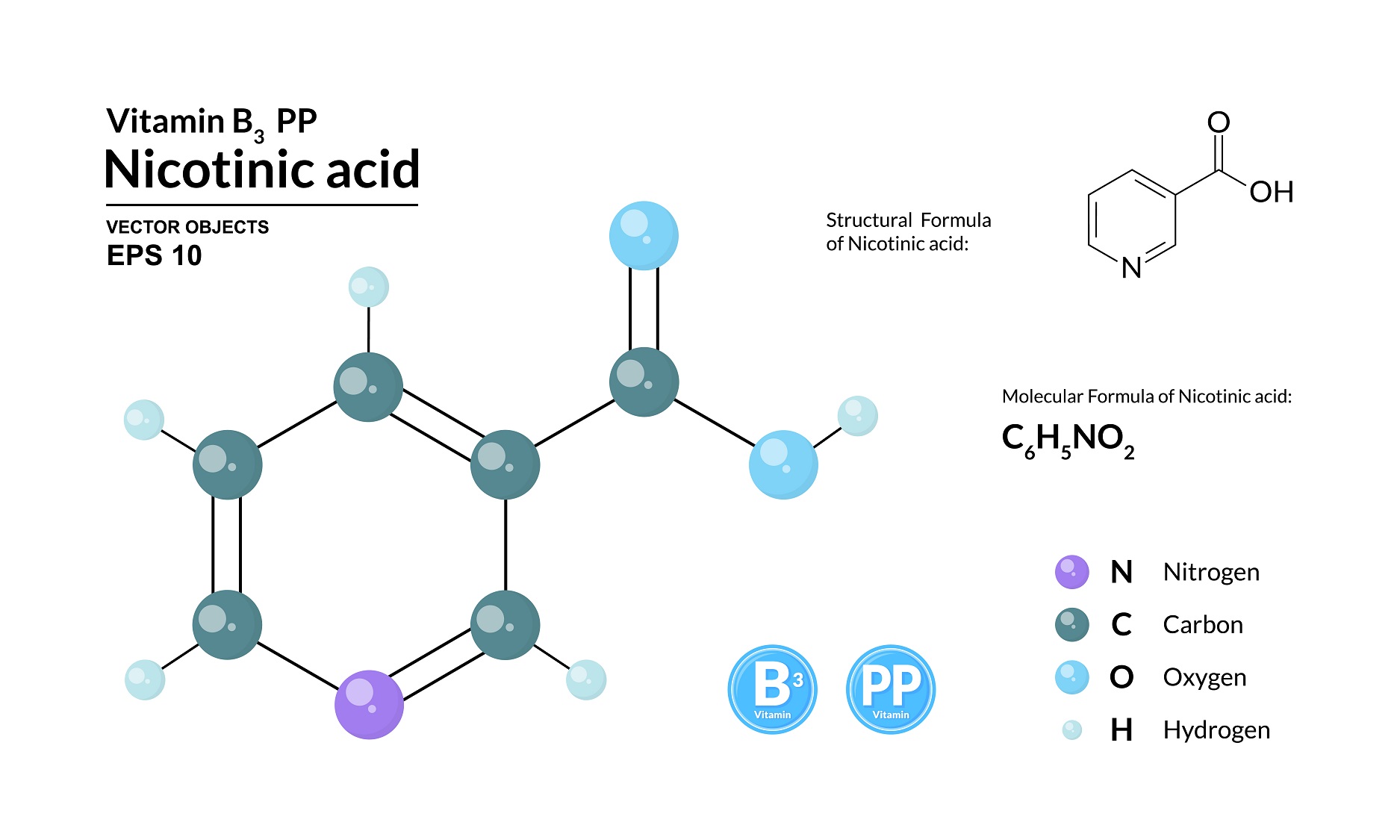
Most times, nicotine is associated with smoking. It is a stimulant, and often has a calming effect on smokers; it helps them manage stress or are so used to smoking that it’s become second nature to them.
Ask any smoker why they smoke and the answer you will get is that it brings them pleasure. Considering that cigarette smoke is something smokers inhale most of the day, it seems ridiculous not to know anything about one of its most potent ingredients. This comprehensive guide aims to rectify that, so read on if you want to learn more about nicotine.

What Is Nicotine & Where Can We Find It?

Nicotine is an alkaloid and parasympathomimetic stimulant found in certain parts of the plants from the nightshade family. It affects the parasympathetic nervous system – the part of our brain that is responsible for involuntary actions (also referred to as feed-and-breed and rest-and-digest actions) that occur after sexual arousal, feeding, urination, defecation, and others.
A common misconception is that nicotine is only found in the tobacco plant when, in fact, it’s pretty widespread. The nightshade family of plants (various tobacco cultivars) will usually contain relatively high amounts of it, but it’s easy to detect nicotine in other fruits, vegetables, and herbs, such as:
- Tomatoes
- Potatoes
- Aubergines
- Peppers
- Celery
- Cauliflower
- Papaya
- Milkweed
- Field horsetail
In fact, we’re all exposed (and ingest) to nicotine daily . Of course, in much smaller quantities than regular smokers, who inhale it in much higher concentrations than are available in edible plants.

Nicotine is an alkaloid and parasympathomimetic stimulant found in certain parts of the plants from the nightshade family. It affects the parasympathetic nervous system – the part of our brain that is responsible for involuntary actions (also referred to as feed-and-breed and rest-and-digest actions) that occur after sexual arousal, feeding, urination, defecation, and others.
A common misconception is that nicotine is only found in the tobacco plant when, in fact, it’s pretty widespread. The nightshade family of plants (various tobacco cultivars) will usually contain relatively high amounts of it, but it’s easy to detect nicotine in other fruits, vegetables, and herbs, such as:
- Tomatoes
- Potatoes
- Aubergines
- Peppers
- Celery
- Cauliflower
- Papaya
- Milkweed
- Field horsetail
In fact, we’re all exposed (and ingest) to nicotine daily . Of course, in much smaller quantities than regular smokers, who inhale it in much higher concentrations than are available in edible plants.
What Was Nicotine Originally For?
Although nicotine as a compound was isolated from tobacco leaves rather late (in 1828), its effects were known to the indigenous peoples of the Americas for at least 2,000 years prior to that. It was used ritualistically as a part of the sacred rites of the Mayan people (and Aztecs, Incas, and Native, and native North American peoples to some extent). With the discovery of the New World, tobacco and nicotine use spread through Europe like wildfire.
In fact, at one point, tobacco was referred to as ‘Herba Regina’ in Europe because Catherine de Medici used it to treat her migraine headaches in 1530. She was kindly supplied by Jean Nicot, whose name is given to both the tobacco plant (Nicotiana tabacum) and its most controversial compound.
Other than in cigars and cigarettes (which contain large amounts of nicotine, sometimes up to 20 mg per piece), it can also be found in various nicotine replacement therapy products (NRTs), such as gums, lozenges, sprays, patches, and so on.
However, what’s interesting is that this substance was used for hundreds of years as an insecticide – the first recorded use for that purpose was in 1763 in France. It’s possible that farmers knew about the insecticidal properties of nicotine long before that – after all, the plants developed it as a form of self-defense against predatory insects and small animals.
The use of nicotine as an insecticide has declined in recent years because it has been discovered that it can interfere with pollinators, such as bees and bumblebees. Even though in low (recommended doses) it won’t kill the pollinators, it can affect their ability to extract nectar and seriously impairs their orientation and memory.
What Are the Side Effects of Nicotine

We’ve already noted the effects of nicotine are stimulatory and sedative, which means that it stimulates the centers in the brain, making smokers more alert and inducing feelings of euphoria. That’s only partly true. In fact, the nicotine side effects are ‘biphasic’ – it is a stimulant in lower doses, while, in higher doses, it can act as a relaxant. These effects are also known as the psychodynamic effects of nicotine. The main side effects of nicotine are:
- increased heart rate and pressure
- dizziness
- nausea
- fatigue
- diarrhea
- nightmares and more.
Pharmacological side effects of nicotine (meaning, affecting the body) are diverse. It slightly (and temporarily) raises blood pressure and heart rate. It also leads to insulin resistance. Essentially, it means that smokers tend to have higher than normal insulin levels in their blood, which can sometimes lead to a prediabetic state. That’s why people who already suffer from diabetes are strongly encouraged to quit smoking since that would allow them to control their disease more easily.
How Does Nicotine Affect the Heart?
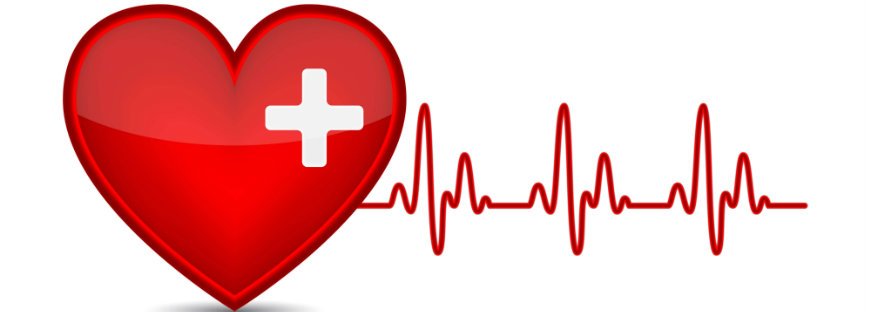
Because nicotine is a stimulant, it’s only natural to conclude that it will result in changes in heart rate and blood pressure. That’s true to some extent, especially if we’re talking about the short-term side effects of nicotine. It promotes the release of noradrenaline, so small and temporary spikes in HR and BP are to be expected.
However, these increases are short-lived and disappear as quickly as 10 minutes after putting out a cigarette. In fact, some studies suggest that longtime smokers tend to have a lower average blood pressure than people who never smoked.
Although the evidence is far from conclusive, scientists have been looking hard into the relationship between nicotine and cardiovascular diseases and, so far, can’t conclude that the substance alone has any serious effects on the heart or the blood vessels. What is safe to say is that people with pre-existing heart problems should definitely avoid this alkaloid in all its forms since it could exacerbate their symptoms.
Is Nicotine Bad for You?
It would be foolish to suggest that this addictive substance is good for the body, but there’s no denying the fact that, in its pure form, it’s far less dangerous than we’ve been led to believe. the effects of nicotine can be compared to those of caffeine – mildly stimulating, yes, but by no means life-threatening.
Very few studies have endeavored to find out how it, in and of itself, affects the human body. However, times are changing and researchers are looking into whether this alkaloid could be used to treat certain medical conditions.
So far, studies have been done in the following areas:
- Nicotine and ADHD – have been found to reduce clinical symptoms in patients with attention-deficit/hyperactivity disorder, especially in non-smokers.
- Nicotine is a neuroprotector – through stimulation of nicotinic cholinergic receptors in the brain, nicotine can restrain acute inflammation. Also, it acts as an estrogen blocker, which is beneficial for men who are trying to regulate their estrogen levels.
- Nicotine and Alzheimer’s, Parkinson’s, and Tourette’s – the fact that smokers suffer less from neurodegenerative diseases have fueled research into whether the effects of nicotine might be considered as a treatment for those conditions. So far, studies suggest that it acts on nicotinic receptors in the brain, and can improve cognitive performance and mental abilities in patients diagnosed with these diseases.
- Nicotine reduces inflammation – it’s currently researched whether a nicotine therapy could be beneficial to people who have acute rheumatoid arthritis.
- Nicotine promotes tissue healing – it promotes revascularization and helps skin heal faster. The best results are observed with nicotine patches applied topically.
- Niacin boosts good cholesterol – niacin (also called nicotinic acid) is a close relative of nicotine and a vitamin falling into a group of B vitamins (B3). It boosts good cholesterol and lowers triglycerides, and reduces atherosclerosis.
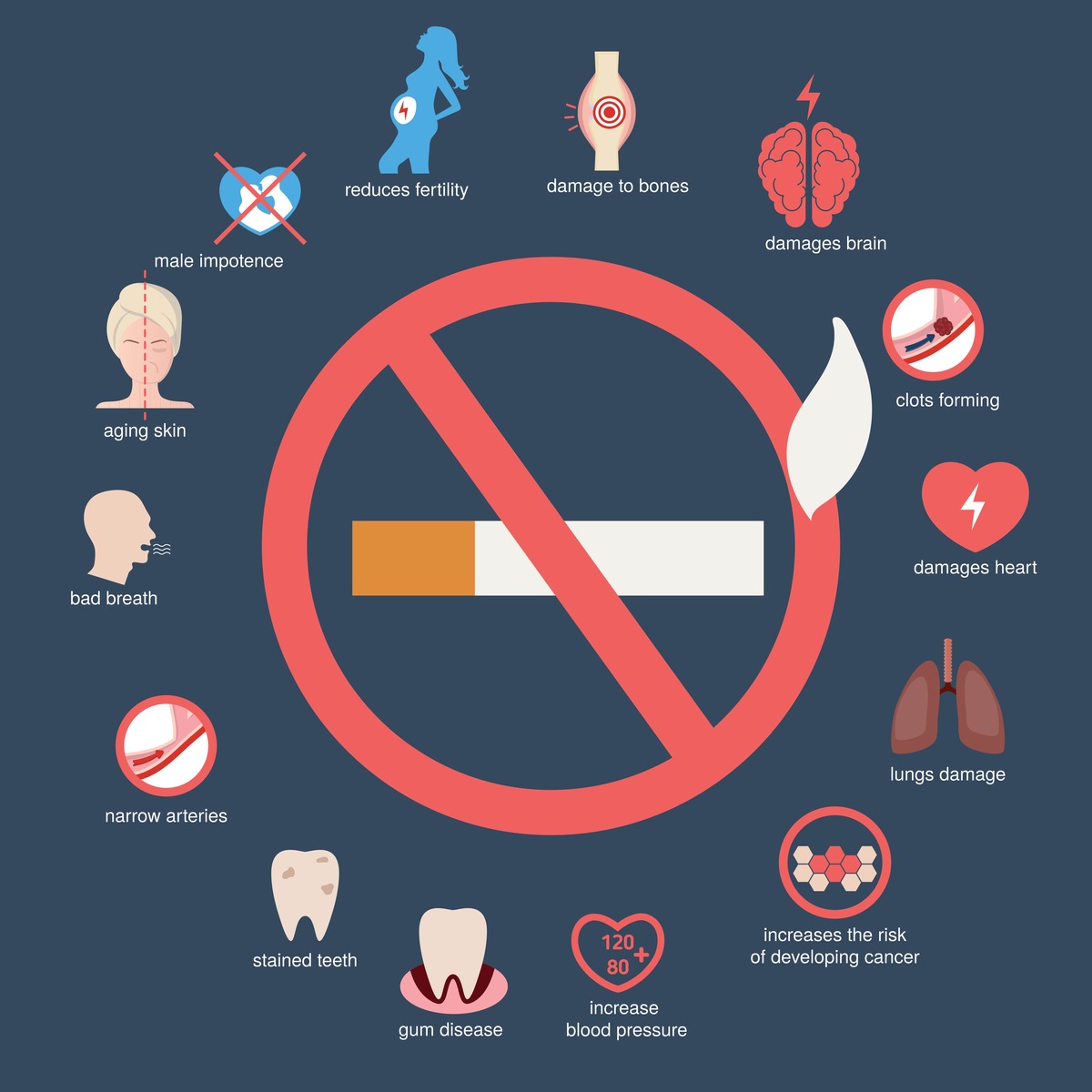
As is evident, the poison really is in the dosage. Removed from cigarette smoke and various chemicals produced by it, nicotine offers interesting avenues for researchers in numerous fields of medicine.
Does Nicotine Cause Cancer?
Most people wrongly assume that it causes cancer. Specifically, they believe that lung cancer and various oral cancers are triggered by nicotine consumption.
Their reasoning follows a familiar line → smoking causes cancer → cigarettes contain nicotine → therefore, nicotine causes cancer. The opinion is so prevalent that, in a study with a sample of nearly 3,000 smokers, 65% of them believe that this alkaloid causes lung cancer and a whopping 71% believe the same for oral cancers.
The fact of the matter is, there is no conclusive evidence that nicotine causes any type of cancer. Information from a Lung Health Study indicates that, although smoking is directly linked to cancer formation, the same can’t be said about nicotine replacement therapy products.
Other studies, including those on Swedish snus (a type of chewable tobacco) also confirm that nicotine doesn’t increase chances of getting cancer. In fact, because many smokers in Sweden turned to snus, the country now has one of the lowest cancer rates in Europe.
However, this doesn’t mean that nicotine and cancer can’t be linked. Due to its revascularization properties and the fact that it promotes capillary blood vessel growth, it can increase the growth of existing tumors. Mice studies also show that this substance can result in a high rate (40%) of tumor recurrences after the initial tumors have been successfully removed or treated.
What Does Nicotine Addiction Feel Like

Possibly the worst aspect of nicotine is that it’s addictive and habit-forming. It binds to certain receptors in the brain, namely the nicotinic acetylcholine receptors. Once there, it triggers the production of neurotransmitters – chemicals in the brain that are responsible for relaying messages between neurons.
Nicotine addiction affects several well-known neurotransmitters:
- Dopamine – the brain’s ‘reward’ chemical, central to the development of many addictions. In essence, dopamine release makes smokers associate an action with something pleasurable, contributing to the reinforcement of the addiction.
- Serotonin – a mood-altering neurotransmitter that is often associated with feelings of pleasure and euphoria.
- GABA – a neuro-inhibitor that acts on neurons in a way that helps reduce stress and combat anxiety.
- Noradrenalin – a transmitter that’s responsible for the fight-or-flight response and puts the organism in the state of heightened alert.

Once the nicotine is absorbed into the system, it finds its way to the brain pretty fast (within 10 to 20 seconds, depending on how it was introduced). Once there, it triggers a number of chemical reactions. Getting addicted doesn’t take long precisely for this reason.
There are many signs of nicotine addiction by which we measure that addiction.
There are five areas in which addiction is measured and compared. The following metrics were developed by doctors Henningfield and Benowitz and are very useful when comparing common drugs to each other.
- Dependence – difficulty quitting, relapse rate, subjective rating of need.
- Tolerance – how much of the substance is needed to satisfy a craving.
- Reinforcement – the property of a substance to make users use it over and over again.
- Intoxication – the effect of the substance on the user.
- Withdrawal – how intensive and common withdrawal symptoms are.
Is Nicotine as Addictive as Heroin
A nicotine high is not comparable to that of heroin or cocaine. It’s still potent enough to make people come back for more over and over again. In fact, compared to other drugs, nicotine has the highest percentage of regular users.
Cigarette smoke contains over 60 known carcinogens. Nicotine addiction needs to be viewed in a completely different light. However, that’s often easier said than done. Smokers who attempt to quit go through severe withdrawal symptoms that pull them right back into the cozy embrace of their addiction more often than not.
The common symptoms of nicotine withdrawal:
- Intense nicotine cravings
- Irritability and mood swings
- Anxiety
- Headaches
- Difficulty concentrating
- Nausea
- Insomnia
- Depression
- Tingling in hands and feet
These symptoms might look intimidating but should not deter you from attempting to quit. Luckily, there are a lot of conventional replacement therapies available currently and, if you’re planning on quitting, you should definitely look into them.
What Is Nicotine Replacement Therapy
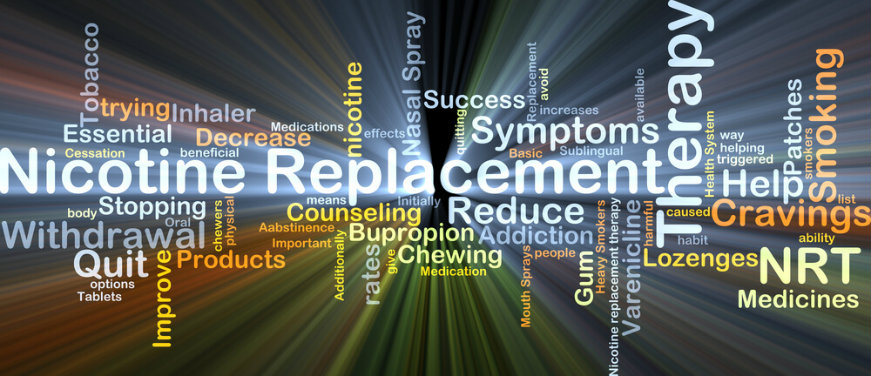
A lot of smokers attempt to quit cold turkey, wrongly assuming that the effects of nicotine on the body in NRT products are as bad as smoking. As we’ve demonstrated already, that’s simply not true. Although the long-term effects of nicotine in conventional NRTs are still widely debated, some studies confirm that they can lead to increased quit rates.
Nicotine replacement therapy products include:
- Nicotine patches – 16 or 25-hour patches are available. They slowly release a predetermined quantity of nicotine into the bloodstream and help to fight cravings.
- Nicotine gums – a fast-acting nicotine replacement, gums are available without a prescription and offer immediate relief. Limit the use of nicotine gums to no more than 24 per day.
- Nicotine lozenges – available in 2 or 4 mg concentrations, lozenges slowly release nicotine into the bloodstream. They should be used sparingly, one every one to two hours.
- Nicotine nasal spray – only available on prescription, nicotine nasal spray quickly deals with cravings thanks to its unique method of delivery. It should not be used for longer than six months.
- Nicotine inhalers – are also available only on prescription, this NRT is fast-acting and immediately reduces nicotine cravings. It should be used for a maximum of six months.
How Much Is Nicotine in a Vape?
More and more people are turning to vaping in an effort to try to quit their smoking habit. And, they are succeeding – some studies find that electronic cigarettes are even more effective than traditional NRTs. Of course, that’s taking into account the amount of nicotine in a given vape juice.
So yes, vapes do have nicotine, but the important thing to note is that it’s optional. There are non nicotine vapes available that only contain propylene glycol/vegetable glycerin and flavorings.
However, beginner vapers and those trying to quit smoking by using electronic cigarettes should consider a higher nicotine concentration at first. This is because vapes deliver nicotine less efficiently than cigarettes.
A recommended dosage for regular (1-pack per day) smokers is roughly 2 ml of vape juice containing 18 mg of nicotine. The amount of bioavailable nicotine, in this case, would be somewhere around 15 mg, which is still less than one pack of combustible cigarettes.
Still, the answer to the eternal question: ‘Is vaping without nicotine bad for you?’is a firm no. Zero nicotine vapes are not bad, and it should be the goal of every smoker turned vaper.
How Long Does Nicotine Stay In Your System?
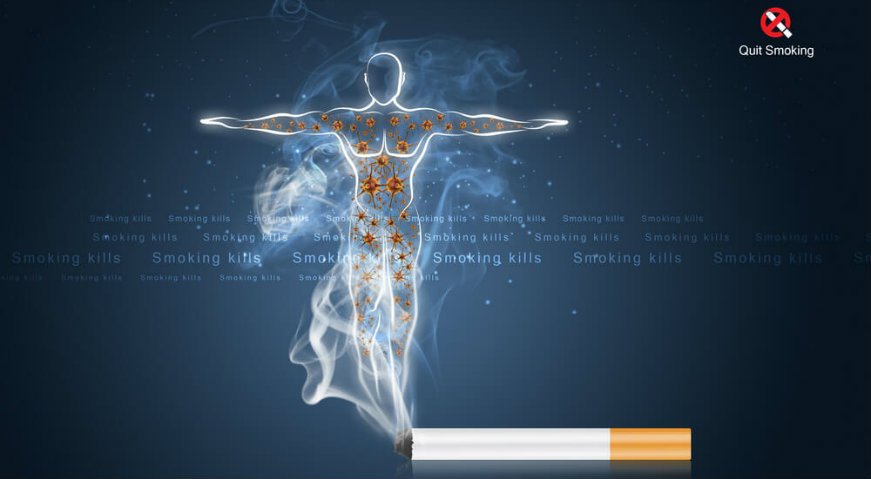
With every cigarette, cigar, snus package, or an inhale of a nicotine-containing vape juice, nicotine is delivered to your body. Once delivered, it stays in your system for some time. The time depends on several things, such as:
- The method of ingestion
- Physiological attributes
- Age and gender
- Liver function
- Frequency of use
- the time of ingesting nicotine
When it comes to nicotine testing, it can be done in several different ways – through urine, blood, saliva, and hair follicles. Nicotine has a low-half life (around two hours) so it usually takes your body anywhere
However, as it passes through the liver, it’s broken down into a metabolite called cotinine. The half-life of cotinine is longer (meaning that it’s a more stable compound), so it can be detected by tests even after the substance has cleared the system.
How Long Does Nicotine Stay In Your Urine?
When it comes to urine tests, they mostly focus on cotinine instead of nicotine. People who smoke an occasional cigarette don’t have much to worry about – cotinine usually clears out of urine in about three to four days. On the other hand, regular and heavy smokers can expect to test positive for up to three weeks after having their last cigarette.
How Long Does Nicotine Stay In Your Saliva and Hair Follicles?
Nicotine and cotinine don’t stay long in saliva – about the same as cotinine stays in the urine, which is four days for non-regular smokers. However, hair follicles are a different matter. It will depend on the test that’s used, but cotinine can be detected in follicles for three months and, in some cases, for a full year.
How Long Does Nicotine Stay In Your Blood?
There are two types of nicotine (cotinine) blood tests – qualitative and quantitative. Qualitative tests are used to check the presence of cotinine in your system; if there’s any there, they will return as positive. Depending on the test, it’s possible to discover as little as 50 ng of cotinine in someone’s system, which means that these tests are pretty reliable. Quantitative tests will tell you how much cotinine is in the system, which is useful when trying to ascertain whether someone is a light, regular, or heavy smoker.
Word of warning – nicotine replacement therapy will also trigger these tests. That’s why health professionals (when instructed) search for anabasine, a compound only found in the blood of those who smoke and not in NRT users.
Nicotine Overdose Symptoms

Most smokers have experienced symptoms of nicotine overdose. Suffice it to say that they are not pleasant, but they are also do not cause panic. When an overdose happens, it’s usually a question of smoking one cigarette or taking one extra vape puff too many in a very short period of time.
The symptoms of nicotine overdose are:
- Nausea
- Dizziness
- Headaches
- Vision and hearing changes
- Abdominal cramps
The important thing is to stay calm and abstain from nicotine for a while. Mild nicotine overdose symptoms usually clear up in an hour or so. However, if they persist, or if loss of consciousness is experienced, then we’re not talking about an overdose, we’re talking about nicotine poisoning.
How Long Does a Nicotine Overdose Last?
Most nicotine overdoses last for a few hours, and the vast majority of them are not life-threatening. The most common symptoms of an overdose are sweating heart palpitations and nausea resulting in in vomiting. While these symptoms are very unpleasant, they are not signs of an emergency.
However, nicotine overdoses in children and pets caused by leaving vape cartridges unattended can be life-threatening. If a child or pet has ingested nicotine, immediately call an emergency room or veterinarian clinic.
Nicotine Poisoning Symptoms

Nicotine poisoning is a serious matter that can end with fatal consequences. The most vulnerable groups are children and elderly people, so, if you vape, make sure to keep your vape juices out of reach. Symptoms of nicotine poisoning include:
- Nausea
- Vomiting
- Severe blood pressure spikes
- Severe arrhythmia
- Loss of consciousness
- Convulsions
- Muscle spasms
If you, or anyone around you, is experiencing these symptoms after either smoking or handling pure nicotine, it’s important that you call the paramedics as soon as possible. There’s been a lot of debate about the fatal dose of nicotine.
It was long believed that that dose is 60 mg, which would put nicotine on par with cyanide, as far as toxicity is concerned. However, the evidence didn’t add up since many poisoning cases included far larger dosages, yet with positive outcomes.
Bernd Meyer, a scientist, decided to investigate those 60 mg claims (which many reputable online sites still stick to), and he found that they trace back to a pharmacology textbook published in 1906 by Rudolf Kobert, a German toxicologist. His rather dubious research methods lead him to conclude that the LD50 (meaning that it kills roughly half of those exposed to that amount) of nicotine is 60 mg, and the claim persisted for close to 100 years.
Newer research (along with recorded cases of nicotine poisoning) suggests that the more likely LD50 of nicotine lies somewhere between 500 and 1000 mg, which is significantly higher than the previous estimate.
Frequently Asked Questions
How Much Nicotine Per Day is Safe?
No amount of cigarettes or any tobacco product is safe. Regardless of how rarely a person smokes or dips, he or she is still inhaling or ingesting dangerous carcinogens. As for a nicotine overdose, a person would have to consume several hundred milligrams of nicotine before experiencing life-threatening symptoms. Smoking, dipping, or vaping will not cause a fatal overdose; however, accidentally ingesting e-liquid can, especially in children or pets.
What Is the Safest Form of Nicotine?
Pure nicotine in the forms of patches, gum, nasal sprays, and other smoking cessation products is safer than nicotine found in cigarettes because they do not contain tar nor produce smoke, nor do they contain the cancerous carcinogens found in cigarettes and smokeless tobacco.
Is Pure Nicotine Bad for You?
Even pure nicotine effects without smoking or chewing tobacco can be bad for a person’s health. One of the reasons is that nicotine raises blood sugar levels while preventing the body from releasing insulin. As a result, when nicotine is present in the body, blood sugar levels do not return to normal as they would otherwise, which is one of the reasons doctors discourage diabetics from smoking.
Does Nicotine Damage Your Brain?
The sedative and stimulating effects of nicotine make it addictive, and its use by teenagers and young adults is believed to make them susceptible to addiction to other substances later on. If you have a child who is smoking, vaping, or using smokeless tobacco, it is essential to make them stop before they develop a habit.
Is It Good to Vape Without Nicotine?
The long-term effects of vaping are not entirely clear, so writing that vaping is better or worse for someone’s health would be ill-advised. However, there are studies that marked vaping is likely much safer than cigarette smoking.
Final Thoughts
With everything we’ve explored in this post, it becomes rather obvious that nicotine is taking a lot of heat for things that are predominantly caused by smoking and other chemicals contained in combustible cigarettes. We’re not saying that nicotine is healthy – the goal of every smoker should be to quit and to be completely rid of both cigarettes and nicotine.
However, further demonization of nicotine will not be beneficial to anyone. It will prevent smokers from trying NRTs and vaping as a substitute for smoking, and it will also hamper medical research into the medical benefits of nicotine.
Dangers of nicotine need to be put into perspective and weighted with the overall negative consequences of smoking. After all, wouldn’t it be preferable to move smokers to alternative nicotine delivery systems than to have them keep smoking, raising overall healthcare, environmental, and other costs? That’s definitely food for thought, and we’d love to hear your take on it. Make sure to leave a comment below to let us know what you think!
Although nicotine as a compound was isolated from tobacco leaves rather late (in 1828), its effects were known to the indigenous peoples of the Americas for at least 2,000 years prior to that. It was used ritualistically as a part of the sacred rites of the Mayan people (and Aztecs, Incas, and Native, and native North American peoples to some extent). With the discovery of the New World, tobacco and nicotine use spread through Europe like wildfire.
In fact, at one point, tobacco was referred to as ‘Herba Regina’ in Europe because Catherine de Medici used it to treat her migraine headaches in 1530. She was kindly supplied by Jean Nicot, whose name is given to both the tobacco plant (Nicotiana tabacum) and its most controversial compound.
Other than in cigars and cigarettes (which contain large amounts of nicotine, sometimes up to 20 mg per piece), it can also be found in various nicotine replacement therapy products (NRTs), such as gums, lozenges, sprays, patches, and so on.
However, what’s interesting is that this substance was used for hundreds of years as an insecticide – the first recorded use for that purpose was in 1763 in France. It’s possible that farmers knew about the insecticidal properties of nicotine long before that – after all, the plants developed it as a form of self-defense against predatory insects and small animals.
The use of nicotine as an insecticide has declined in recent years because it has been discovered that it can interfere with pollinators, such as bees and bumblebees. Even though in low (recommended doses) it won’t kill the pollinators, it can affect their ability to extract nectar and seriously impairs their orientation and memory.
What Are the Side Effects of Nicotine

We’ve already noted the effects of nicotine are stimulatory and sedative, which means that it stimulates the centers in the brain, making smokers more alert and inducing feelings of euphoria. That’s only partly true. In fact, the nicotine side effects are ‘biphasic’ – it is a stimulant in lower doses, while, in higher doses, it can act as a relaxant. These effects are also known as the psychodynamic effects of nicotine. The main side effects of nicotine are:
- increased heart rate and pressure
- dizziness
- nausea
- fatigue
- diarrhea
- nightmares and more.
Pharmacological side effects of nicotine (meaning, affecting the body) are diverse. It slightly (and temporarily) raises blood pressure and heart rate. It also leads to insulin resistance. Essentially, it means that smokers tend to have higher than normal insulin levels in their blood, which can sometimes lead to a prediabetic state. That’s why people who already suffer from diabetes are strongly encouraged to quit smoking since that would allow them to control their disease more easily.
How Does Nicotine Affect the Heart?

Because nicotine is a stimulant, it’s only natural to conclude that it will result in changes in heart rate and blood pressure. That’s true to some extent, especially if we’re talking about the short-term side effects of nicotine. It promotes the release of noradrenaline, so small and temporary spikes in HR and BP are to be expected.
However, these increases are short-lived and disappear as quickly as 10 minutes after putting out a cigarette. In fact, some studies suggest that longtime smokers tend to have a lower average blood pressure than people who never smoked.
Although the evidence is far from conclusive, scientists have been looking hard into the relationship between nicotine and cardiovascular diseases and, so far, can’t conclude that the substance alone has any serious effects on the heart or the blood vessels. What is safe to say is that people with pre-existing heart problems should definitely avoid this alkaloid in all its forms since it could exacerbate their symptoms.
Is Nicotine Bad for You?
It would be foolish to suggest that this addictive substance is good for the body, but there’s no denying the fact that, in its pure form, it’s far less dangerous than we’ve been led to believe. the effects of nicotine can be compared to those of caffeine – mildly stimulating, yes, but by no means life-threatening.
Very few studies have endeavored to find out how it, in and of itself, affects the human body. However, times are changing and researchers are looking into whether this alkaloid could be used to treat certain medical conditions.
So far, studies have been done in the following areas:
- Nicotine and ADHD – have been found to reduce clinical symptoms in patients with attention-deficit/hyperactivity disorder, especially in non-smokers.
- Nicotine is a neuroprotector – through stimulation of nicotinic cholinergic receptors in the brain, nicotine can restrain acute inflammation. Also, it acts as an estrogen blocker, which is beneficial for men who are trying to regulate their estrogen levels.
- Nicotine and Alzheimer’s, Parkinson’s, and Tourette’s – the fact that smokers suffer less from neurodegenerative diseases have fueled research into whether the effects of nicotine might be considered as a treatment for those conditions. So far, studies suggest that it acts on nicotinic receptors in the brain, and can improve cognitive performance and mental abilities in patients diagnosed with these diseases.
- Nicotine reduces inflammation – it’s currently researched whether a nicotine therapy could be beneficial to people who have acute rheumatoid arthritis.
- Nicotine promotes tissue healing – it promotes revascularization and helps skin heal faster. The best results are observed with nicotine patches applied topically.
- Niacin boosts good cholesterol – niacin (also called nicotinic acid) is a close relative of nicotine and a vitamin falling into a group of B vitamins (B3). It boosts good cholesterol and lowers triglycerides, and reduces atherosclerosis.

As is evident, the poison really is in the dosage. Removed from cigarette smoke and various chemicals produced by it, nicotine offers interesting avenues for researchers in numerous fields of medicine.
Does Nicotine Cause Cancer?
Most people wrongly assume that it causes cancer. Specifically, they believe that lung cancer and various oral cancers are triggered by nicotine consumption.
Their reasoning follows a familiar line → smoking causes cancer → cigarettes contain nicotine → therefore, nicotine causes cancer. The opinion is so prevalent that, in a study with a sample of nearly 3,000 smokers, 65% of them believe that this alkaloid causes lung cancer and a whopping 71% believe the same for oral cancers.
The fact of the matter is, there is no conclusive evidence that nicotine causes any type of cancer. Information from a Lung Health Study indicates that, although smoking is directly linked to cancer formation, the same can’t be said about nicotine replacement therapy products.
Other studies, including those on Swedish snus (a type of chewable tobacco) also confirm that nicotine doesn’t increase chances of getting cancer. In fact, because many smokers in Sweden turned to snus, the country now has one of the lowest cancer rates in Europe.
However, this doesn’t mean that nicotine and cancer can’t be linked. Due to its revascularization properties and the fact that it promotes capillary blood vessel growth, it can increase the growth of existing tumors. Mice studies also show that this substance can result in a high rate (40%) of tumor recurrences after the initial tumors have been successfully removed or treated.
What Does Nicotine Addiction Feel Like

Possibly the worst aspect of nicotine is that it’s addictive and habit-forming. It binds to certain receptors in the brain, namely the nicotinic acetylcholine receptors. Once there, it triggers the production of neurotransmitters – chemicals in the brain that are responsible for relaying messages between neurons.
Nicotine addiction affects several well-known neurotransmitters:
- Dopamine – the brain’s ‘reward’ chemical, central to the development of many addictions. In essence, dopamine release makes smokers associate an action with something pleasurable, contributing to the reinforcement of the addiction.
- Serotonin – a mood-altering neurotransmitter that is often associated with feelings of pleasure and euphoria.
- GABA – a neuro-inhibitor that acts on neurons in a way that helps reduce stress and combat anxiety.
- Noradrenalin – a transmitter that’s responsible for the fight-or-flight response and puts the organism in the state of heightened alert.

Once the nicotine is absorbed into the system, it finds its way to the brain pretty fast (within 10 to 20 seconds, depending on how it was introduced). Once there, it triggers a number of chemical reactions. Getting addicted doesn’t take long precisely for this reason.
There are many signs of nicotine addiction by which we measure that addiction.
There are five areas in which addiction is measured and compared. The following metrics were developed by doctors Henningfield and Benowitz and are very useful when comparing common drugs to each other.
- Dependence – difficulty quitting, relapse rate, subjective rating of need.
- Tolerance – how much of the substance is needed to satisfy a craving.
- Reinforcement – the property of a substance to make users use it over and over again.
- Intoxication – the effect of the substance on the user.
- Withdrawal – how intensive and common withdrawal symptoms are.
Is Nicotine as Addictive as Heroin
A nicotine high is not comparable to that of heroin or cocaine. It’s still potent enough to make people come back for more over and over again. In fact, compared to other drugs, nicotine has the highest percentage of regular users.
Cigarette smoke contains over 60 known carcinogens. Nicotine addiction needs to be viewed in a completely different light. However, that’s often easier said than done. Smokers who attempt to quit go through severe withdrawal symptoms that pull them right back into the cozy embrace of their addiction more often than not.
The common symptoms of nicotine withdrawal:
- Intense nicotine cravings
- Irritability and mood swings
- Anxiety
- Headaches
- Difficulty concentrating
- Nausea
- Insomnia
- Depression
- Tingling in hands and feet
These symptoms might look intimidating but should not deter you from attempting to quit. Luckily, there are a lot of conventional replacement therapies available currently and, if you’re planning on quitting, you should definitely look into them.
What Is Nicotine Replacement Therapy

A lot of smokers attempt to quit cold turkey, wrongly assuming that the effects of nicotine on the body in NRT products are as bad as smoking. As we’ve demonstrated already, that’s simply not true. Although the long-term effects of nicotine in conventional NRTs are still widely debated, some studies confirm that they can lead to increased quit rates.
Nicotine replacement therapy products include:
- Nicotine patches – 16 or 25-hour patches are available. They slowly release a predetermined quantity of nicotine into the bloodstream and help to fight cravings.
- Nicotine gums – a fast-acting nicotine replacement, gums are available without a prescription and offer immediate relief. Limit the use of nicotine gums to no more than 24 per day.
- Nicotine lozenges – available in 2 or 4 mg concentrations, lozenges slowly release nicotine into the bloodstream. They should be used sparingly, one every one to two hours.
- Nicotine nasal spray – only available on prescription, nicotine nasal spray quickly deals with cravings thanks to its unique method of delivery. It should not be used for longer than six months.
- Nicotine inhalers – are also available only on prescription, this NRT is fast-acting and immediately reduces nicotine cravings. It should be used for a maximum of six months.
How Much Is Nicotine in a Vape?
More and more people are turning to vaping in an effort to try to quit their smoking habit. And, they are succeeding – some studies find that electronic cigarettes are even more effective than traditional NRTs. Of course, that’s taking into account the amount of nicotine in a given vape juice.
So yes, vapes do have nicotine, but the important thing to note is that it’s optional. There are non nicotine vapes available that only contain propylene glycol/vegetable glycerin and flavorings.
However, beginner vapers and those trying to quit smoking by using electronic cigarettes should consider a higher nicotine concentration at first. This is because vapes deliver nicotine less efficiently than cigarettes.
A recommended dosage for regular (1-pack per day) smokers is roughly 2 ml of vape juice containing 18 mg of nicotine. The amount of bioavailable nicotine, in this case, would be somewhere around 15 mg, which is still less than one pack of combustible cigarettes.
Still, the answer to the eternal question: ‘Is vaping without nicotine bad for you?’is a firm no. Zero nicotine vapes are not bad, and it should be the goal of every smoker turned vaper.
How Long Does Nicotine Stay In Your System?

With every cigarette, cigar, snus package, or an inhale of a nicotine-containing vape juice, nicotine is delivered to your body. Once delivered, it stays in your system for some time. The time depends on several things, such as:
- The method of ingestion
- Physiological attributes
- Age and gender
- Liver function
- Frequency of use
- the time of ingesting nicotine
When it comes to nicotine testing, it can be done in several different ways – through urine, blood, saliva, and hair follicles. Nicotine has a low-half life (around two hours) so it usually takes your body anywhere
However, as it passes through the liver, it’s broken down into a metabolite called cotinine. The half-life of cotinine is longer (meaning that it’s a more stable compound), so it can be detected by tests even after the substance has cleared the system.
How Long Does Nicotine Stay In Your Urine?
When it comes to urine tests, they mostly focus on cotinine instead of nicotine. People who smoke an occasional cigarette don’t have much to worry about – cotinine usually clears out of urine in about three to four days. On the other hand, regular and heavy smokers can expect to test positive for up to three weeks after having their last cigarette.
How Long Does Nicotine Stay In Your Saliva and Hair Follicles?
Nicotine and cotinine don’t stay long in saliva – about the same as cotinine stays in the urine, which is four days for non-regular smokers. However, hair follicles are a different matter. It will depend on the test that’s used, but cotinine can be detected in follicles for three months and, in some cases, for a full year.
How Long Does Nicotine Stay In Your Blood?
There are two types of nicotine (cotinine) blood tests – qualitative and quantitative. Qualitative tests are used to check the presence of cotinine in your system; if there’s any there, they will return as positive. Depending on the test, it’s possible to discover as little as 50 ng of cotinine in someone’s system, which means that these tests are pretty reliable. Quantitative tests will tell you how much cotinine is in the system, which is useful when trying to ascertain whether someone is a light, regular, or heavy smoker.
Word of warning – nicotine replacement therapy will also trigger these tests. That’s why health professionals (when instructed) search for anabasine, a compound only found in the blood of those who smoke and not in NRT users.
Nicotine Overdose Symptoms

Most smokers have experienced symptoms of nicotine overdose. Suffice it to say that they are not pleasant, but they are also do not cause panic. When an overdose happens, it’s usually a question of smoking one cigarette or taking one extra vape puff too many in a very short period of time.
The symptoms of nicotine overdose are:
- Nausea
- Dizziness
- Headaches
- Vision and hearing changes
- Abdominal cramps
The important thing is to stay calm and abstain from nicotine for a while. Mild nicotine overdose symptoms usually clear up in an hour or so. However, if they persist, or if loss of consciousness is experienced, then we’re not talking about an overdose, we’re talking about nicotine poisoning.
How Long Does a Nicotine Overdose Last?
Most nicotine overdoses last for a few hours, and the vast majority of them are not life-threatening. The most common symptoms of an overdose are sweating heart palpitations and nausea resulting in in vomiting. While these symptoms are very unpleasant, they are not signs of an emergency.
However, nicotine overdoses in children and pets caused by leaving vape cartridges unattended can be life-threatening. If a child or pet has ingested nicotine, immediately call an emergency room or veterinarian clinic.
Nicotine Poisoning Symptoms

Nicotine poisoning is a serious matter that can end with fatal consequences. The most vulnerable groups are children and elderly people, so, if you vape, make sure to keep your vape juices out of reach. Symptoms of nicotine poisoning include:
- Nausea
- Vomiting
- Severe blood pressure spikes
- Severe arrhythmia
- Loss of consciousness
- Convulsions
- Muscle spasms
If you, or anyone around you, is experiencing these symptoms after either smoking or handling pure nicotine, it’s important that you call the paramedics as soon as possible. There’s been a lot of debate about the fatal dose of nicotine.
It was long believed that that dose is 60 mg, which would put nicotine on par with cyanide, as far as toxicity is concerned. However, the evidence didn’t add up since many poisoning cases included far larger dosages, yet with positive outcomes.
Bernd Meyer, a scientist, decided to investigate those 60 mg claims (which many reputable online sites still stick to), and he found that they trace back to a pharmacology textbook published in 1906 by Rudolf Kobert, a German toxicologist. His rather dubious research methods lead him to conclude that the LD50 (meaning that it kills roughly half of those exposed to that amount) of nicotine is 60 mg, and the claim persisted for close to 100 years.
Newer research (along with recorded cases of nicotine poisoning) suggests that the more likely LD50 of nicotine lies somewhere between 500 and 1000 mg, which is significantly higher than the previous estimate.
Frequently Asked Questions
How Much Nicotine Per Day is Safe?
No amount of cigarettes or any tobacco product is safe. Regardless of how rarely a person smokes or dips, he or she is still inhaling or ingesting dangerous carcinogens. As for a nicotine overdose, a person would have to consume several hundred milligrams of nicotine before experiencing life-threatening symptoms. Smoking, dipping, or vaping will not cause a fatal overdose; however, accidentally ingesting e-liquid can, especially in children or pets.
What Is the Safest Form of Nicotine?
Pure nicotine in the forms of patches, gum, nasal sprays, and other smoking cessation products is safer than nicotine found in cigarettes because they do not contain tar nor produce smoke, nor do they contain the cancerous carcinogens found in cigarettes and smokeless tobacco.
Is Pure Nicotine Bad for You?
Even pure nicotine effects without smoking or chewing tobacco can be bad for a person’s health. One of the reasons is that nicotine raises blood sugar levels while preventing the body from releasing insulin. As a result, when nicotine is present in the body, blood sugar levels do not return to normal as they would otherwise, which is one of the reasons doctors discourage diabetics from smoking.
Does Nicotine Damage Your Brain?
The sedative and stimulating effects of nicotine make it addictive, and its use by teenagers and young adults is believed to make them susceptible to addiction to other substances later on. If you have a child who is smoking, vaping, or using smokeless tobacco, it is essential to make them stop before they develop a habit.
Is It Good to Vape Without Nicotine?
The long-term effects of vaping are not entirely clear, so writing that vaping is better or worse for someone’s health would be ill-advised. However, there are studies that marked vaping is likely much safer than cigarette smoking.
Final Thoughts
With everything we’ve explored in this post, it becomes rather obvious that nicotine is taking a lot of heat for things that are predominantly caused by smoking and other chemicals contained in combustible cigarettes. We’re not saying that nicotine is healthy – the goal of every smoker should be to quit and to be completely rid of both cigarettes and nicotine.
However, further demonization of nicotine will not be beneficial to anyone. It will prevent smokers from trying NRTs and vaping as a substitute for smoking, and it will also hamper medical research into the medical benefits of nicotine.
Dangers of nicotine need to be put into perspective and weighted with the overall negative consequences of smoking. After all, wouldn’t it be preferable to move smokers to alternative nicotine delivery systems than to have them keep smoking, raising overall healthcare, environmental, and other costs? That’s definitely food for thought, and we’d love to hear your take on it. Make sure to leave a comment below to let us know what you think!


Paul Appleton
April 30, 2019 at 10:34 amThanks.